People who suffer from mental illness experience a variety of overwhelming symptoms that affect the way they feel, think, and interact with others.
People who suffer from mental illness experience a variety of overwhelming symptoms that affect the way they feel, think, and interact with others. From persistent sadness, to manic episodes, to delusions and hallucinations, mental illness carries a stigma that can make sufferers feel isolated and lonely. In reality, more Americans are silently suffering from mental health disorders than we think. 43.8 million adults experience mental illness in a given year, and more than 10 million have co-occurring mental health and addiction disorders.
There are many different conditions that are recognized as mental illnesses. At Alvarado Parkway Institute, we seek to educate family members on the common signs and symptoms associated with various mental health disorders and what behaviors to expect from loved ones. The following represent conditions we treat at our mental health clinics throughout San Diego.
Mood disorders
- Major depression
Most people feel sad from time to time, like after the death of a loved one, but major depression is different. Major depression is a mood disorder that is marked by persistent feelings of sadness or emptiness, loss of interest in normal activities, fatigue, significant weight loss or gain, and recurrent thoughts of suicide. An estimated 16 million American adults live with major depression.
- Bipolar disorder
Like depression, bipolar disorder is a mood disorder. People who have it rapidly fluctuate between happiness and sadness and often have normal moods in between. The happy or “up” feeling is called mania, and the down feeling is depression. Bipolar disorder typically starts in a person’s late teens or early twenties. While the condition is life long, it can be managed with treatment and medication. Roughly 6 million American adults live with bipolar disorder.
Anxiety disorders
- General anxiety disorder
Occasional anxiety around giving a presentation at work or taking an important test is normal. But for people with anxiety disorders, the feelings of fear, dread, and worry don’t go away. In fact, they often worsen over time if the condition is left untreated. Symptoms of general anxiety disorder include irritability, difficulty concentrating, restlessness, and trouble sleeping. About 42 million American adults have anxiety disorders, making it the most common of all mental illnesses.
- Panic disorder
Panic disorder is an anxiety disorder characterized by recurrent and unexpected panic attacks. Symptoms include heart palpitations, sweating, trembling, shortness of breath, choking, feeling out of control, and intense worry about when the next panic attack will happen. People with panic disorder will avoid places were panic attacks have happened in the past.
- Phobias
A phobia is a strong, irrational fear of something that isn’t inherently dangerous. A fear of heights may prevent a person with acrophobia from visiting the top of the Space Needle. Someone with agoraphobia can be so fearful of public places he or she may refuse to leave the house. Social phobia can cause intense feelings of anxiety in everyday social situations.
- Obsessive-compulsive disorder
A person with obsessive-compulsive disorder has repeated, unsettling thoughts and performs specific actions over and over again to make the thoughts go away. If a person has an obsession with germs, for example, compulsions might include repeatedly washing the hands, counting, or cleaning. Obsessive-compulsive disorder tends to run in families.
- Post-traumatic stress disorder
An individual who lives through or witnesses a tragic event may develop post-traumatic stress disorder, or PTSD. The illness causes flashbacks, sleep problems or nightmares, angry outbursts, and feeling stressed or afraid after the danger is over. Medications and talk therapy with a doctor or counselor can ease the symptoms of PTSD.
- Borderline personality disorder
A person with borderline personality disorder (BPD) experiences extremes mood swings and is uncertain about his or her identity. Their interests and values can change rapidly and they tend to view things as either all good or all bad. Other symptoms of BPD include impulsiveness, fear of being abandoned, inability to be alone, and repeated acts of self-injury. BPD often co-occurs with a substance abuse disorder.
Addictive disorders
Many people think of addiction as a physical dependence on alcohol or drugs, but it’s much more than that. Addiction is a disease of the brain that requires mental health services for recovery. Addictive disorders develop over time and are considered to be chronic and recurring. People with addictive disorders continue to use drugs and/or alcohol despite the detrimental consequences to their lives, such as suspension or expulsion from school, or getting fired from work.
- Psychosis
People with psychosis lose touch with reality and see, hear, or believe things that aren’t real. Psychosis is a symptom of a psychotic disorder, like schizophrenia, and includes delusions, hallucinations, incoherent speech, and inappropriate behavior. A person experiencing a psychotic episode may also have depression, anxiety, and difficulty functioning overall.
Help for mental health disorders is available
At Alvarado Parkway Institute, our goal is to break down the stigma associated with mental illness and help our patients understand that their conditions do not define them. In our care, patients receive individualized treatment plans designed to help them achieve stability, alleviate the symptoms of mental illness, and develop the coping skills they need to lead happy, healthy lives. If you or a loved one has been diagnosed with anxiety, depression, bipolar disorder, or another mental illness, help is available. Call our 24-hour crisis line at (619) 667-6125 and start your recovery today.

